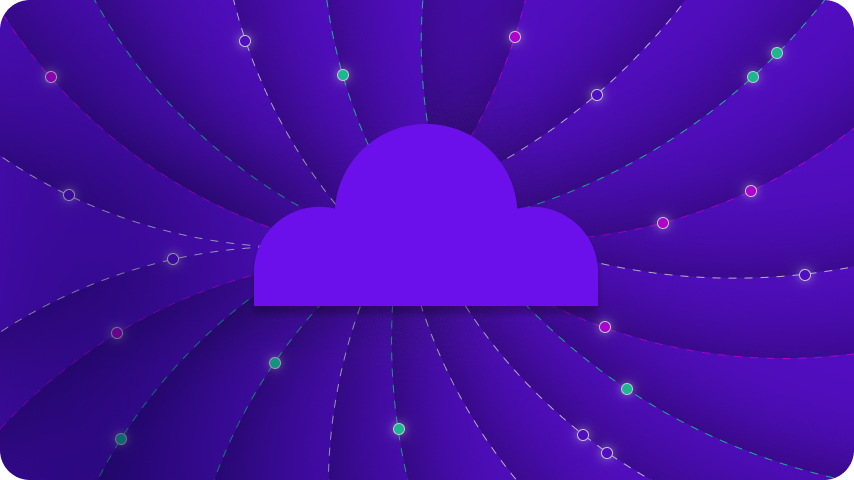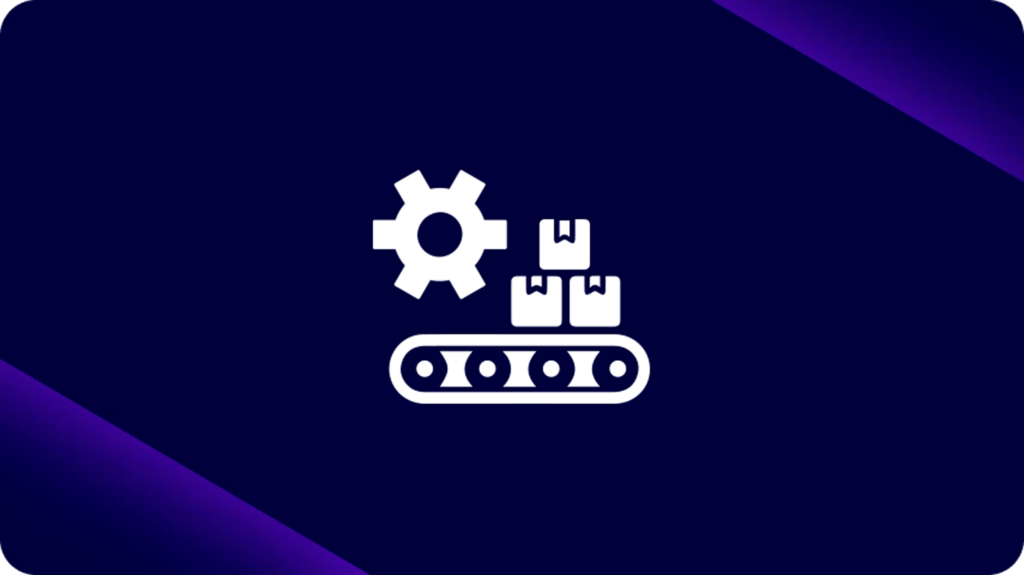julho 23, 2024
No cenário digital atual, as empresas utilizam uma grande variedade de aplicações SaaS (Software como Serviço) para gerenciar diferentes áreas de suas operações. De ferramentas de gestão de relacionamento com o cliente (CRM), como o Salesforce, a plataformas de gestão de projetos, como o Asana, os recursos SaaS se tornaram indispensáveis.
No entanto, com o aumento dessa dependência, surge a necessidade de integração eficiente entre essas ferramentas para garantir um fluxo de dados contínuo e workflows otimizados. É aí que a integração SaaS entra em cena.
>> Agende uma demonstração personalizada com nossa equipe de especialistas e veja como o iPaaS da Digibee trará eficiência ao seu negócio.
O que é integração SaaS?
Integração SaaS refere-se ao processo de conectar duas ou mais aplicações em nuvem para permitir que elas se comuniquem e compartilhem dados de forma eficaz. Geralmente, isso é realizado por meio de APIs (Application Programming Interfaces), que atuam como intermediários, permitindo a interação entre diferentes aplicações de software.
Além disso, sistemas ERP (Enterprise Resource Planning) desempenham um papel importante ao fornecer uma plataforma unificada para gerenciar diversos processos de negócios e facilitar as integrações SaaS.
Integração SaaS vs. Integração de Aplicações vs. Integração de APIs
Esses termos são frequentemente usados de forma intercambiável, mas possuem diferenças:
- Integração SaaS: conectar ferramentas em nuvem para otimizar operações e aumentar a visibilidade dos dados.
- Integração de aplicações: refere-se à conexão entre diferentes aplicações de software, tanto locais quanto em nuvem.
- Integração API: utiliza especificamente APIs para permitir a comunicação entre diferentes aplicações.
As soluções iPaaS (Integration Platform as a Service) simplificam a integração por API, oferecendo uma interface intuitiva que reduz a necessidade de conhecimento técnico, tornando mais fácil para as organizações implementarem integrações eficientes.
Por que a integração SaaS é importante?
O uso de ferramentas SaaS aumentou significativamente na última década. De acordo com o relatório Estado da Integração Empresarial 2023 , a maioria das empresas utiliza dezenas de aplicações SaaS. No entanto, essa proliferação pode levar à fragmentação de softwares, em que a falta de interoperabilidade entre SaaS e sistemas legados cria desafios significativos para as empresas. Sem uma integração SaaS eficaz, as organizações podem enfrentar:
- Silos de dados: sistemas desconectados geram dados fragmentados e desafios de integração, dificultando a visibilidade ampla das operações e a conectividade geral.
- Workflows ineficientes: a entrada manual de dados e as transferências entre sistemas podem ser demoradas e propensas a erros.
- Equipes de TI sobrecarregadas: o gerenciamento de vários sistemas diferentes pode sobrecarregar os departamentos de TI, causando atrasos nos projetos e aumento dos custos operacionais.
Benefícios da integração SaaS
A integração eficaz de SaaS oferece vários benefícios, incluindo:
- Economia de tempo: a automação das transferências de dados entre sistemas e aplicações reduz a necessidade de inserção manual, liberando tempo valioso para os colaboradores.
- Maior visibilidade de dados: os sistemas integrados dão uma visão unificada dos dados, melhorando a tomada de decisões com conectividade.
- Redução de erros humanos: a automação minimiza o risco de erros associados à entrada manual de dados.
- Melhoria da experiência de funcionários e clientes: processos simplificados resultam em melhor atendimento e maior eficiência.
- Escalabilidade: sistemas e workflows integrados podem facilmente acomodar o crescimento, permitindo que as empresas dimensionem as operações sem interrupções significativas.
Desafios da integração SaaS
Embora a integração SaaS ofereça vantagens significativas, ela também traz desafios:
- Custo: implementar e manter integrações pode ser caro, especialmente para soluções personalizadas e sistemas locais.
- Tempo: os projetos de integração podem ser demorados, exigindo planejamento e execução cuidadosos.
- Complexidade: a integração de dados e de toda a estrutura de tecnologia exige navegar por diversos obstáculos técnicos, desde mapeamento de dados até a compatibilidade entre APIs.
Como o iPaaS pode ajudar
Plataformas de integração oferecem uma solução completa para superar os desafios da integração SaaS. Diferentemente das integrações personalizadas, que podem ser caras e complexas, o iPaaS oferece:
- Facilidade de implementação: interfaces fáceis de usar e conectores pré-construídos facilitam a configuração de integrações e a conexão de aplicativos sem amplo conhecimento técnico.
- Soluções low-code: plataformas iPaaS geralmente contam com ambientes low-code ou no-code, permitindo que usuários de áreas de negócios criem e gerenciem integrações.
- Serviços gerenciados: os provedores de iPaaS cuidam da manutenção e das atualizações, garantindo que as integrações permaneçam funcionais e seguras.
- Time to value mais rápido: com capacidades de implantação rápida, o iPaaS permite que as organizações alcancem os benefícios da integração mais rapidamente, acelerando a transformação digital.
Apresentando Digibee
A Digibee oferece uma plataforma de integração nascida na nuvem e serverless , projetada para escalar integrações de maneira contínua entre microsserviços, plataformas em nuvem e arquiteturas legadas. Com foco em facilidade de implementação, agilidade no time to launch e suporte prático, a Digibee garante que todos os desenvolvedores possam gerenciar e executar integrações SaaS de maneira eficaz.
Para organizações que buscam explorar soluções de integração SaaS, a Digibee oferece uma plataforma robusta que aborda os pontos críticos associados a aplicações SaaS desconectadas e gera valor real para os negócios.
Estudos de caso e aplicações do mundo real
Assaí Atacadista: Ao utilizar a plataforma da Digibee, o Assaí Atacadista conseguiu simplificar seus processos de integração, reduzindo significativamente o tempo de lançamento de novos projetos. A empresa conectou diversas aplicações SaaS, resultando em maior eficiência operacional e maior precisão dos dados. Leia o estudo de caso completo.
Mariner Logistics: A Mariner Logistics acelerou seu ciclo de desenvolvimento de produtos adotando a plataforma de integração da Digibee. A iniciativa facilitou o compartilhamento de dados em tempo real entre seu sistema de gestão logística e outras aplicações SaaS, promovendo decisões mais rápidas e aumento da produtividade. Explore os detalhes.
O futuro da integração SaaS
À medida que as empresas continuam adotando mais ferramentas SaaS, a necessidade de integração eficaz só crescerá. Tendências futuras de integração SaaS podem incluir:
- IA e aprendizado de máquina: uso de IA para prever necessidades de integração e automatizar processos complexos.
- Análise avançada de dados: capacidades analíticas aprimoradas para fornecer insights mais profundos sobre o desempenho das integrações e os resultados de negócios.
- Maior personalização: soluções de integração mais personalizadas dentro do ecossistema tecnológico para atender a requisitos específicos de negócios.
- Segurança aprimoradamedidas de segurança aprimoradas para proteger dados sensíveis durante os processos de integração.
Considerações para escolher uma solução iPaaS
Ao selecionar uma solução iPaaS, as empresas devem considerar diversos fatores para garantir que escolham uma plataforma que atenda às suas necessidades:
- Facilidade de uso: a plataforma deve oferecer uma interface intuitiva, permitindo que usuários técnicos e não técnicos criem e gerenciem integrações.
- Escalabilidade: a solução deve crescer junto com a empresa, gerenciando volumes maiores de dados e cenários de integração mais complexos.
- Segurança: recursos robustos de segurança são essenciais para proteger dados sensíveis e atender às regulamentações do setor.
- Suporte e manutenção: procure fornecedores que ofereçam suporte abrangente e atualizações regulares para manter as integrações funcionando perfeitamente.
- Custo: avalie o custo total de propriedade, incluindo configuração inicial, manutenção contínua e taxas adicionais para recursos avançados.
Conclusão
A integração SaaS é essencial para as operações de negócios modernas, permitindo que as empresas aproveitem ao máximo suas soluções de software. Compreendendo os benefícios e desafios da integração SaaS e utilizando plataformas como o iPaaS, as empresas podem alcançar conectividade eficiente entre aplicações, melhorar a eficiência e promover o crescimento.
Para saber mais sobre como a Digibee pode apoiar as suas necessidades de integração, explore nossa plataforma or agende uma demonstração hoje mesmo.









